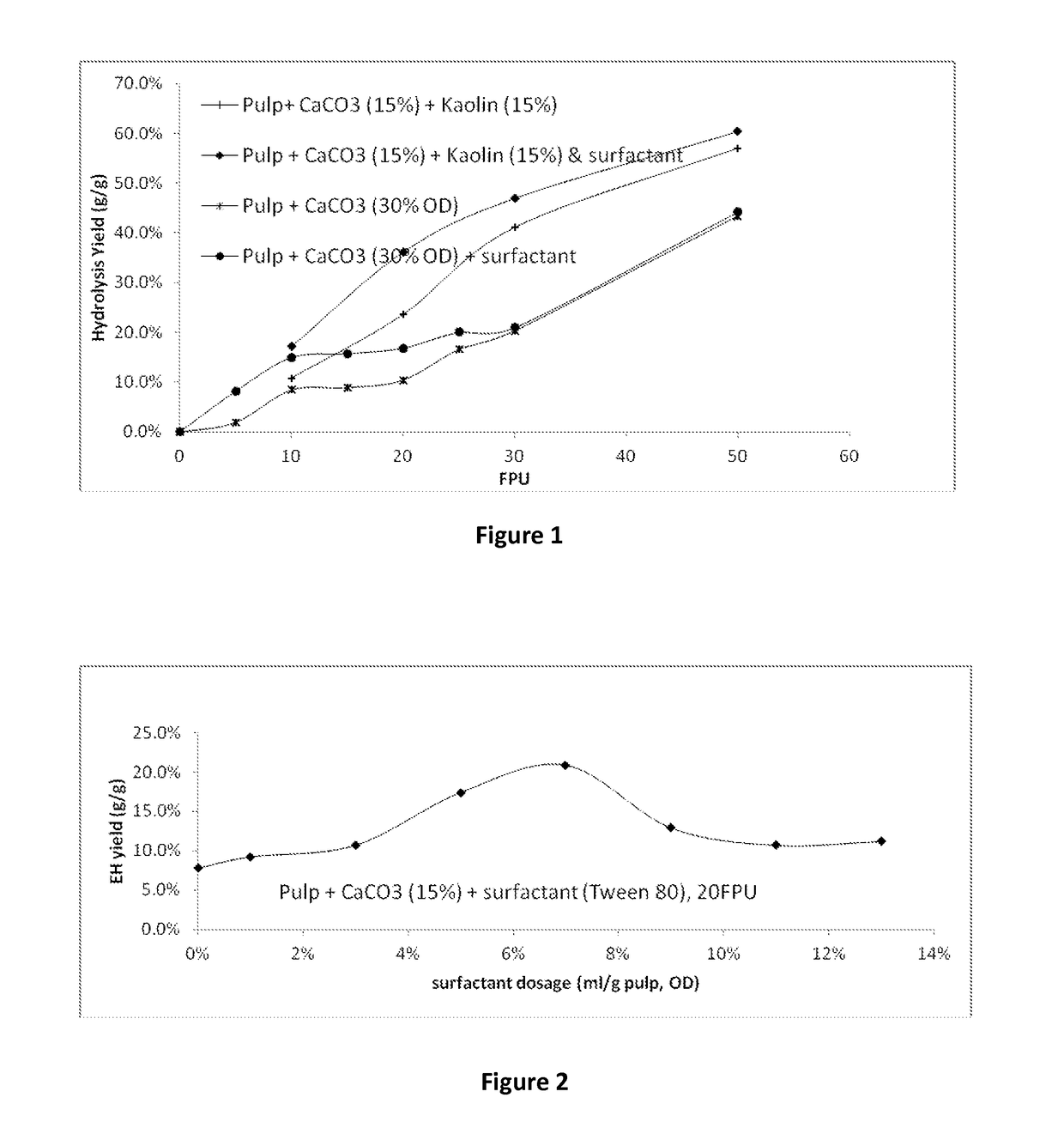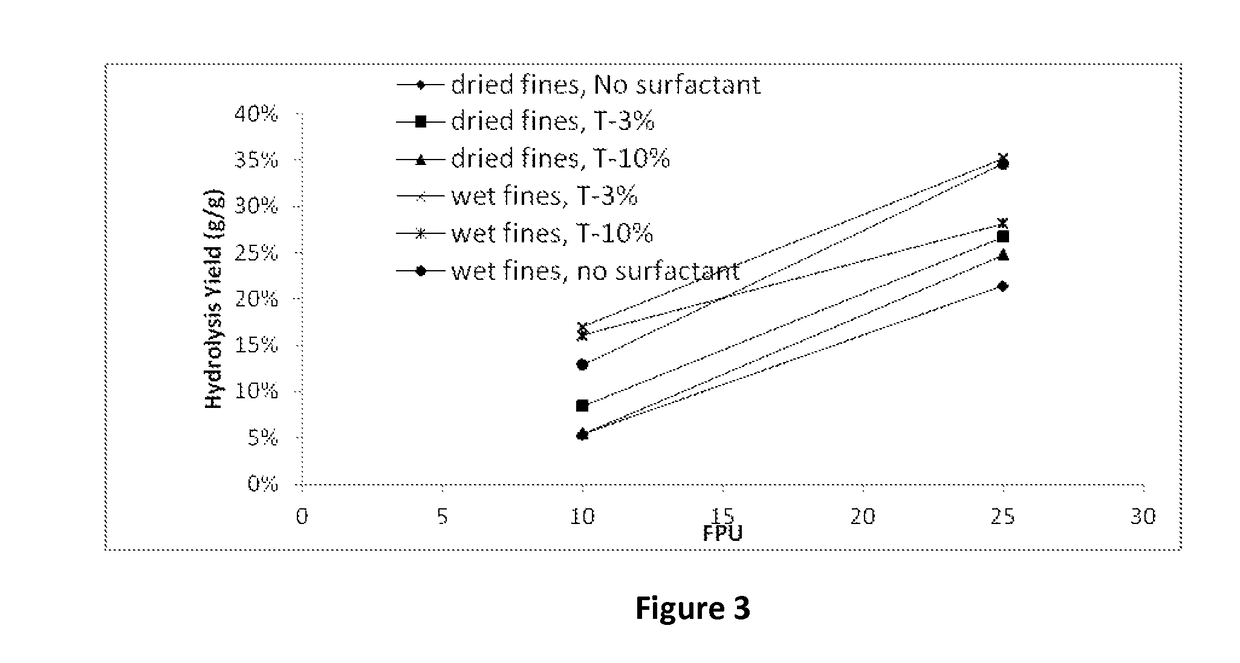Hydrolysis of cellulosic fines in primary clarified sludge of paper mills and the addition of a surfactant to increase the yield
a cellulosic fine and cellulosic sludge technology, applied in the field of cellulosic solid waste processing from paper, can solve the problems of projected future cost increase substantially, and achieve the effects of reducing separation cost, high value fermentable sugar, and efficient fermentation
- Summary
- Abstract
- Description
- Claims
- Application Information
AI Technical Summary
Benefits of technology
Problems solved by technology
Method used
Image
Examples
Embodiment Construction
[0097]Hydrolysis experiments were conducted on two different feedstocks. The first was a simulated waste feedstock, consisting of a sample of unbleached kraft softwood pulp (UBSWKP) that is typical of repulped old corrugated containerboard stocks (OCC). The second was an actual reject fines waste stream from a recycled paper board mill. (Supplied by Minimill LLC, Dewitt N.Y. in conjunction with Greenpak LLC, Niagara Falls N.Y.). The reject stream consisted of cellulosic fines (35%) with the remainder as ash-producing constituents. The non-cellulosic portion contains kaolin and precipitated calcium carbonate fillers from the waste paper and smaller amounts of plastic and other residues.
[0098]The non-cellulosic portion of the feedstock acts a competitor for enzyme adsorption, and reduces the net yield and productivity of the hydrolysis per unit enzyme reactant. This leads to increased costs and inefficiencies in the hydrolysis process.
[0099]Table 2 below shows the enzymatic hydrolysis...
PUM
| Property | Measurement | Unit |
|---|---|---|
| affinity | aaaaa | aaaaa |
| oven dry weight | aaaaa | aaaaa |
| binding affinity | aaaaa | aaaaa |
Abstract
Description
Claims
Application Information
 Login to View More
Login to View More - R&D
- Intellectual Property
- Life Sciences
- Materials
- Tech Scout
- Unparalleled Data Quality
- Higher Quality Content
- 60% Fewer Hallucinations
Browse by: Latest US Patents, China's latest patents, Technical Efficacy Thesaurus, Application Domain, Technology Topic, Popular Technical Reports.
© 2025 PatSnap. All rights reserved.Legal|Privacy policy|Modern Slavery Act Transparency Statement|Sitemap|About US| Contact US: help@patsnap.com



